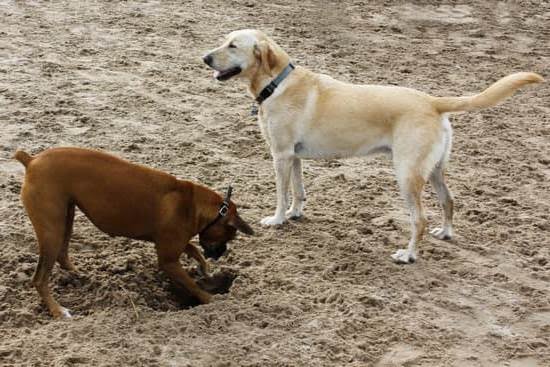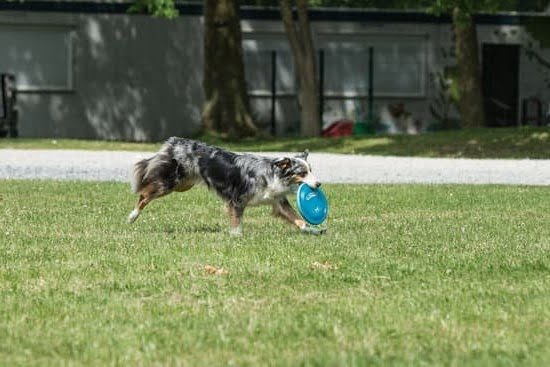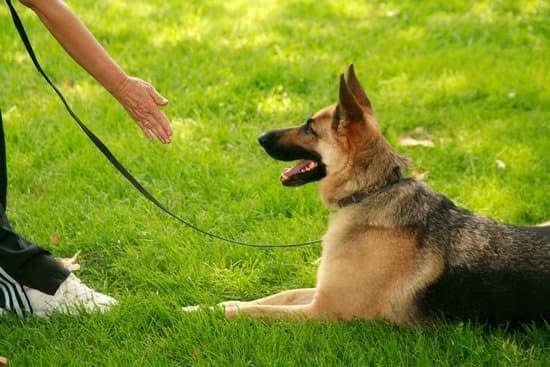Training your dog to attack on command is a complex and challenging endeavor that requires careful planning, knowledge, and responsible ownership. This introductory section will provide an overview of the basics involved in this type of training, including its importance, potential benefits and drawbacks, as well as the need for ethical training methods.
Training a dog to attack on command can be beneficial in specific situations where protection or security is necessary. However, it also comes with significant responsibilities and potential risks. It is crucial to understand the implications of this type of training and approach it with caution.
Before diving into attack training, establishing a strong foundation is essential. Building a trusting bond with your dog and ensuring they have mastered basic obedience commands are crucial prerequisites for successful attack training. Positive reinforcement plays a pivotal role throughout the entire training process, encouraging desired behaviors while maintaining the well-being of your dog.
As responsible owners, it is important to acknowledge that not all dogs are suitable for attack training. Certain breeds are known for their protective instincts and suitability for such tasks due to their temperament and energy levels. However, thorough research and understanding of breed-specific characteristics are necessary to ensure compatibility and success in training.
The First Steps
The first steps in training your dog to attack on command are crucial for establishing a strong foundation. These initial stages set the tone for the rest of the training process and can greatly contribute to the success or failure of your dog’s training. Here are some important considerations to keep in mind when establishing a strong foundation for attack training.
One of the most crucial aspects of building a strong foundation is developing a trusting bond with your dog. Trust is essential when teaching your dog complex commands like attacking on command. Spend quality time with your dog, engage in activities that they enjoy, and consistently provide positive reinforcement during training sessions. This will not only strengthen your bond but also increase their willingness to learn and perform commands.
Before diving into attack training, it is important to ensure that your dog has a solid understanding of basic obedience commands such as sit, stay, and come. Obedience training establishes you as the pack leader and provides a framework for more advanced training techniques. Teaching these basic commands also allows you to have better control over your dog during attack training exercises.
Positive reinforcement plays a key role in establishing a strong foundation for attack training. Rewarding desired behaviors with treats, praise, or playtime reinforces those behaviors and motivates your dog to continue performing them. When introducing new concepts or commands during attack training, use positive reinforcement techniques to encourage your dog’s progress.
To summarize:
- Build trust by spending quality time with your dog and providing positive reinforcement.
- Ensure that your dog has mastered basic obedience commands before proceeding to attack training.
- Use positive reinforcement techniques to motivate and reward desired behaviors.
By following these guidelines, you can establish a solid foundation for successful attack training with your dog. Remember that patience, consistency, and positivity are key throughout this process.
Selecting Suitable Breeds for Attack Training
Identifying Dog Breeds Known for Their Protective Instincts and Suitability for Attack Training
When choosing a dog breed for attack training, it is important to consider the innate characteristics and instincts of different breeds. Some breeds are known for their natural protective instincts and suitability for attack training. Working breeds such as German Shepherds, Belgian Malinois, Rottweilers, Doberman Pinschers, and Dutch Shepherds are commonly used in roles that require protection and security.
These breeds often possess the traits necessary for successful attack training, such as intelligence, loyalty, agility, and a strong drive to protect their owners. However, it is essential to remember that not all individuals within a breed will possess these traits or be suitable for attack training. Every dog is unique and should be evaluated on an individual basis.
The Importance of Researching and Understanding Breed-Specific Characteristics
Before selecting a breed for attack training, it is crucial to research and understand the specific characteristics associated with that breed. This knowledge will help you assess whether the breed meets your requirements and is suitable for your lifestyle.
Different breeds have different energy levels, temperaments, exercise needs, and health considerations. For example, some dogs may have a higher prey drive or be more inclined towards dominance, which can impact their suitability for attack training. It is essential to select a breed that matches your capabilities as an owner in terms of exercise requirements, mental stimulation, and ongoing commitment.
Considering Temperament and Energy Levels Necessary for Successful Attack Training
The temperament of a dog plays a significant role in its suitability for attack training. Ideally, a dog selected for this type of training should have stable nerves and be able to remain calm even under stressful situations. They should exhibit confidence without being overly aggressive or fearful.
In addition to temperament considerations, energy levels are also crucial when choosing a breed for attack training. Dogs with high energy levels require more physical and mental stimulation, making them better candidates for this type of training.
It is essential to consult with experienced trainers or breeders who specialize in the specific breed you are considering. They can provide valuable insights into the temperament and energy levels required for successful attack training, helping you make an informed decision when selecting a suitable breed for your training goals.
Finding the Right Professional Trainer or Training Program
Finding the right professional trainer or training program is essential when training your dog to attack on command. While basic obedience training can be done at home, advanced techniques for attack training should be taught by an experienced and reputable trainer.
One of the benefits of seeking professional guidance is that trainers have a wealth of knowledge and expertise in advanced training techniques. They can provide personalized advice and tailor the training program to suit your dog’s specific needs and temperament. Additionally, working with a professional trainer ensures that you are using safe and effective methods throughout the training process.
When selecting a trainer, it is important to do thorough research and choose someone who has experience in working with attack-trained dogs. Look for trainers who specialize in protection dog training or have a background in law enforcement or military K-9 units. Reading reviews and testimonials from previous clients can also give you an idea of their reputation and effectiveness as a trainer.
There are various types of training programs available for attack dogs, such as Schutzhund or personal protection training. Schutzhund is a popular German sport that tests a dog’s skills in obedience, tracking, and protection work. Personal protection training focuses specifically on teaching dogs how to protect their owners under certain circumstances. It’s important to select a program that aligns with your goals for your dog’s attack training.
By finding the right professional trainer or training program, you can ensure that your dog receives proper guidance and instruction throughout the attack training process. This will not only help develop their skills effectively but also prioritize safety and responsible ownership. Remember to always choose trainers who promote ethical methods and adhere to local laws and regulations regarding dog aggression and protection work.
Conditioning and Controlled Aggression Training
Gradual Conditioning Process
Before beginning the attack training process, it is crucial to condition your dog to exhibit controlled aggression. This involves desensitizing them to certain cues and stimuli associated with the attack command. One effective method is using bite sleeves or tug toys during training sessions. By gradually introducing these items and encouraging your dog to engage with them, you can build their confidence and drive to respond when given the attack command.
Bite Work Exercises
Bite work exercises are an essential component of conditioning and aggression training. These exercises allow your dog to practice engaging in controlled biting behaviors. However, it is important to note that bite work exercises should only be conducted under the guidance of a professional trainer who specializes in this type of training. A professional trainer will ensure that the exercises are performed safely and in a controlled environment.
During bite work exercises, your dog will be taught how to target specific areas on a target or sleeve, such as the arm or leg. The goal is for your dog to learn precision and control over their biting technique. By providing positive reinforcement, such as treats or praise, when they successfully follow commands during these exercises, you can reinforce desired behavior and motivation.
Consistency, Patience, and Timing
Consistency, patience, and proper timing are key factors in conditioning your dog for controlled aggression. It is important to establish a consistent routine for training sessions and adhere to it diligently. This consistency helps create a predictable environment for your dog which enhances learning and understanding.
Patience is also vital during conditioning training as each dog progresses at their own pace. Some dogs may pick up commands quickly while others may take longer to grasp certain concepts. At all times, it is important not to rush the process or become frustrated with your dog’s progress.
In addition, timing plays a crucial role in reinforcing desired behavior during training sessions. It is essential to deliver rewards or praise immediately after your dog responds correctly to a command. By doing so, you are associating the desired behavior with positive outcomes, which encourages your dog to repeat it in the future.
Through consistent and patient conditioning exercises, accompanied by proper timing and reinforcement, you can effectively train your dog to exhibit controlled aggression on command. However, always keep in mind that these exercises should only be conducted under the supervision of a professional trainer to ensure both your dog’s safety and the correct execution of the training techniques.
Teaching the Command and Release Cue
The command and release cue is a crucial aspect of training a dog to attack on command. This section will discuss the step-by-step process of teaching this specific command and reinforcing it with positive rewards. Additionally, the vital role of the release cue in ensuring controlled behavior after the attack command will be explained.
To begin teaching the command and release cue, it is important to have already established a strong foundation of trust and basic obedience with your dog. This means that your dog should be responsive to commands such as sit, stay, and come before moving on to attack training. Building this foundation is essential for effective communication between you and your dog during attack training sessions.
The specific command used for attack training can vary depending on personal preference, but common commands include “Attack” or “Guard.” It is recommended to choose a short and distinct word or phrase that will clearly convey your intention to your dog. Once you have selected the command, consistency is key. Use this command consistently every time you want your dog to execute an attack.
When teaching the command, start in a low-distraction environment such as a quiet room or backyard. Begin by giving the attack command while presenting a target such as a bite sleeve or tug toy. As soon as your dog shows any sign of moving toward or engaging with the target, reward them with praise and treats. Repeat this process several times, gradually increasing the distance between you and the target.
Once your dog consistently responds to the attack command in low-distraction environments, gradually introduce distractions such as noises or other people. Reward your dog when they respond correctly despite these distractions. It is crucial to reinforce correct responses immediately with positive rewards to strengthen their association with the desired behavior.
At this stage, it is also important to introduce the concept of a release cue. The release cue signals to your dog that their task is complete and they should cease their aggressive behavior. A common release cue is the word “Out” or a specific hand signal. Consistency in using the release cue is essential to ensure that your dog understands when they should stop attacking and transition back to controlled behavior.
Balancing Attack Training with Socialization and Obedience
There is no denying that training a dog to attack on command requires dedication and commitment. However, it is essential to balance attack training with socialization and obedience to ensure a well-rounded and responsible dog. This section will discuss the importance of incorporating socialization and obedience training into your dog’s routine.
Socialization plays a crucial role in preventing aggression towards innocent individuals. By exposing your dog to different people, animals, and environments from an early age, you can help them develop positive associations and confidence in various situations. This exposure helps dogs become more adaptable and less likely to react aggressively when faced with unfamiliar circumstances.
Obedience training goes hand in hand with socialization by teaching your dog impulse control, manners, and appropriate behavior. It establishes clear boundaries for your dog’s actions and reinforces their understanding of what is expected of them in different situations. Obedience training also creates a strong foundation for communication between you and your dog, allowing for better control even during high-stress situations.
Finding the right balance between attack training, socialization, and obedience is essential to prevent over-aggression. Overtraining in attack commands without proper socialization or obedience can lead to unpredictable behavior or increased aggression towards others. It is crucial to prioritize these aspects of training to create a well-behaved, trustworthy dog that understands their role as a protector but knows when aggression is necessary.
To maintain this balance, consider incorporating daily socialization exercises as part of your dog’s routine. Take them on walks in different environments, introduce them to new people and animals gradually, and provide opportunities for positive interactions. Also, continue practicing obedience commands regularly to reinforce good behavior and maintain control over your dog’s actions.
Ethical Considerations and Legal Implications
In conclusion, training a dog to attack on command requires careful consideration of ethical responsibilities and awareness of potential legal implications. It is crucial to recognize that training a dog for aggression should only be done by responsible owners who are committed to the wellbeing and safety of others. Ethical considerations come into play when assessing whether such specialized training aligns with the values of kindness, compassion, and respect for all living beings.
It is important to note that irresponsible training or aggression towards others can have severe legal consequences. Laws differ from jurisdiction to jurisdiction regarding dog attacks or bites, but it is essential for dog owners to be aware of and comply with their local laws and regulations. Any instance of injury or harm caused by an aggressive attack trained dog could result in legal action against the owner, potentially involving fines, penalties, and even criminal charges.
Therefore, responsible ownership is crucial when embarking on the journey of training a dog to attack on command. This includes selecting suitable breeds based on their temperament, energy levels, and protective instincts. Additionally, finding a reputable professional trainer or training program that adheres to ethical standards is essential for ensuring proper training methodology.
Ultimately, responsible ownership means striking a balance between attack training and other important elements like socialization and obedience. Socializing your dog helps prevent aggression towards innocent individuals and ensures they can interact safely within their community. Incorporating obedience training alongside attack training is also vital for maintaining control over your dog’s behavior in various contexts.
Frequently Asked Questions
Is it illegal to train your dog to attack on command?
Training a dog to attack on command can potentially be illegal, depending on the jurisdiction and specific circumstances. In many places, such training is considered dangerous and can pose risks to public safety.
It is important to note that deliberately teaching a dog to harm others is not only unethical but also puts both the dog and other individuals at risk of injury or legal consequences. Generally, responsible dog owners should focus on positive reinforcement training methods that promote good behavior and obedience while ensuring the safety of everyone involved.
How do I train my dog to be aggressive towards strangers?
It is strongly discouraged and generally unethical to train a dog to be aggressive towards strangers or anyone else for that matter. Aggression in dogs can lead to serious injuries and poses substantial risks to the well-being of individuals around them as well as the dog itself.
Instead, emphasis should be placed on socializing dogs from an early age, exposing them to various people, places, and experiences positively so they learn appropriate behavior in different situations. Positive reinforcement-based training techniques should serve as the foundation for shaping a dog’s behavior, promoting obedience, trust, and healthy interactions with others.
What is the attack command for a dog?
The use of an “attack” command for a dog is not recommended or encouraged within normal dog training practices. While specialized working dogs may have commands that involve protective behaviors under the control of professional handlers (such as police or military dogs), it is essential to remember that these are highly trained animals with specific purposes under carefully regulated circumstances.
For regular pet owners or trainers seeking basic obedience and good behavior from their dogs, focusing on commands such as sit, stay, come, and leave it will likely prove more beneficial in fostering a safe environment for both the dog and those around them.

Welcome to the blog! I am a professional dog trainer and have been working with dogs for many years. In this blog, I will be discussing various topics related to dog training, including tips, tricks, and advice. I hope you find this information helpful and informative. Thanks for reading!





